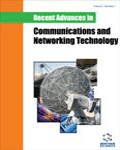Abstract
Microstrip patch antennas mainly draw attention to low-power transmitting
and receiving applications. These antennas consist of a metal patch (rectangular,
square, or some other shape) on a thin layer of dielectric/ferrite (called a substrate) on a
ground plane. Microstrip antennas have matured considerably during the past three
decades, and many of their limitations have been overcome. As the size of
communication devices is decreasing day by day, the demand for miniaturized patch
antennas is growing. Many methods of reducing the size of antennas have been
developed in the past two decades. The recent trend in this direction is to use fractal
geometry. The design of an antenna for a specific resonant frequency requires the
calculation of the optimal value of various dimensions. This is a hard task for fractal
antennas because the accurate mathematical formulas leading to exact solutions do not
exist for the analysis and design of these antennas. The use of bio-inspired computing
techniques is gaining momentum in antenna design and analysis due to rapid growth in
the computational processing power, and the main techniques are Artificial Neural
Network (ANN), Genetic Algorithm (GA), Particle Swarm Optimization (PSO),
Bacterial Foraging Optimization (BFO), and Swine Influenza Model-based
Optimization (SIMBO), etc. In the area of antenna design, the ANNs are employed to
model the relationship between the physical and electromagnetic parameters. The
trained ANNs are effectively used for the analysis and design of various types of
antennas. Bio-inspired optimization techniques have been used by researchers to
calculate the optimal parameters of various patch antennas and for the size optimization
of antennas. Also, the hybrids of ANN and optimization techniques are proposed as
effective algorithms for many applications, especially when the expressions for relating
the input and output variables are not available. The presented research has addressed
these recent topics by designing miniaturized fractal antennas using bio-inspired
computing techniques for various low-power applications, thus, providing cost-effective and efficient solutions.




















